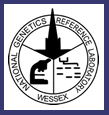
_
|
||||||||
|
High
throughput mutation detection strategy
|
||||||||
|
Mutation Screening Project Leader: Chris Mattocks Mutation screening can be split in to two fundamental processes. A primary screen is used to detect the presence of a sequence variation in a particular fragment. This may or may not characterise the variation in question. A secondary screen (usually by sequencing) is used to confirm the results of the primary screen with respect to the particular sample in question and may also be used to characterise mutations if this is not a function of the primary screen. One of the most fundamental questions regarding which methodology should be used for high throughput mutation screening for large genes is whether to use a direct sequencing approach or an indirect approach for the primary screen. We have carried out extensive theoretical analysis of this question and have identified the main factors that need to be considered in deciding between the two methodologies. A simplified model can be viewed here. A more sophisticated spread sheet model that we have used extensively is available for down loading together with explanatory notes. Explanatory notes: Pre
screen modelling explanatory notes.doc (41.0KB) Obviously the primary consideration with any screen will be the sensitivity. However assuming a methodology has a satisfactory sensitivity the main factors are: the relative ‘value’ of the pre-screen (in terms of either time per test, or cost per test) compared to sequencing, the number of fragments required to be analysed to achieve a result on a particular patient and the failure rates of the pre-screen method compared to that of a direct sequencing strategy. Using SPODS we have evaluated two different methods of mutation screening applied to the same set of fragments. In house we have set up confirmation sensitive capillary electrophoresis (CSCE) using a protocol originally developed and validated by the Cancer Genome group at the Sanger Centre. This has proved to be both extremely sensitive and very rapid. We have also
evaluated a novel mass-spectrometry application produced by Sequenom.
This uses T7 promoter mediated transcription followed by MALDI-TOF
detection of base specific RNA cleavage products (MassCleave™).
|
||||||||
Last Updated: 30 July, 2008 by G. Watkins. |
